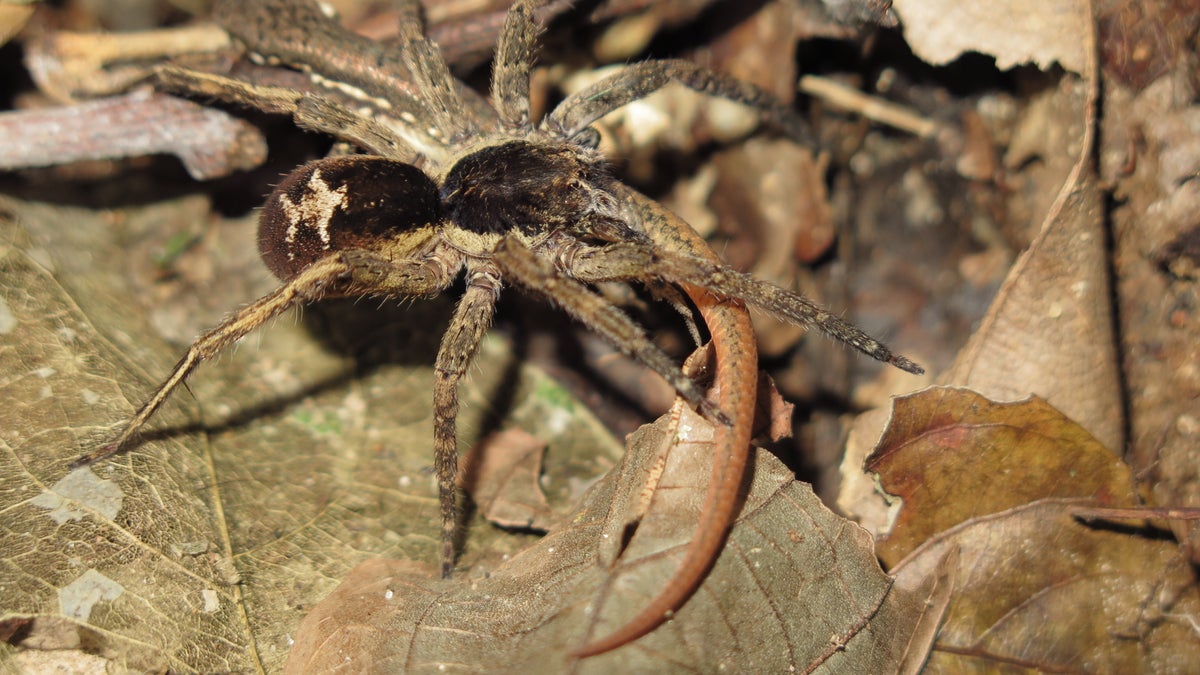A dinner plate-sized tarantula with a big appetite preyed on a young opossum during a recent hunt in the Amazon rainforest — and the horrifying encounter was caught on tape.
Biologists at the University of Michigan (U of M) studied rare predator-prey interactions, particularly between arthropods and small vertebrates, over the course of a few years in the lowland rainforest located near the Andes foothills. They detailed 15 different predation events in a paper published in "Amphibian & Reptile Conservation" on Thursday.
“This is an underappreciated source of mortality among vertebrates,” Daniel Rabosky, an evolutionary biologist at U of M who leads a team of researchers to the Amazon rainforest about once or twice a year, said in an online statement. “A surprising amount of death of small vertebrates in the Amazon is likely due to arthropods such as big spiders and centipedes.”
PHOTOS OF BURMESE PYTHON SWALLOWING DEER RELEASED BY FLORIDA OFFICIALS
The Michigan researchers captured footage and still images of battles between spiders, snakes, scorpions, ants, beetles, water bugs, among others. Many predators relied on paralyzing venom to trap their meal, while others used their large jaws to their advantage.

A wandering spider (Ctenidae) preys on a subadult Cercosaura eigenmanni lizard in the Amazon rainforest. (Photo by Mark Cowan, in Amphibian & Reptile Conservation)
Every interaction was brutal (in its own way), but none was perhaps as vicious as the late-night slaughter of a mouse opossum by a tarantula (theraphosid spider).
"The spider was on the ground in the leaf litter holding the opossum by the neck region," the researchers described in their paper, noting that the opossum — roughly the size of a softball — was still alive when they spotted the pair.
After about five minutes, the creature became motionless and the spider dragged it behind a tree root, disappearing into the darkness.
TENNESSEE WOMAN BITTEN BY BROWN RECLUSE SPIDER ALLEGEDLY FINDS DOZENS MORE IN APARTMENT
Upon reviewing footage of the rare occurrence, Robert Voss, a mammologist at the American Museum of Natural History confirmed that it appeared to be the first-ever documentation of "a large mygalomorph spider [tarantula] preying upon opossums," National Geographic reports.
“We were pretty ecstatic and shocked, and we couldn’t really believe what we were seeing."
"Tarantula predation on vertebrates is not a common thing, but it does happen. They are opportunistic feeders and they’ll take whatever they can subdue," arachnologist Rick West, who was not a part of the research group, told the magazine, adding that they typically feed on frogs.
The news came as a happy surprise to the researchers.
“We were pretty ecstatic and shocked, and we couldn’t really believe what we were seeing,” Michael Grundler, a Ph.D. student at U of M and contributing author, said in a statement. “We knew we were witnessing something pretty special, but we weren’t aware that it was the first observation until after the fact.”

A wandering spider is pictured snacking on a subadult Cercosaura eigenmanni lizard. (Photo by Pascal Title, in Amphibian & Reptile Conservation)
During their expedition, the authors of the study had one goal in mind: to better understand the food web and the "pressures" impacting populations of small animals.
"Predation of small vertebrates by arthropods has been documented in several lowland rainforest sites, yet our knowledge of these interactions remains limited, especially given the diversity of vertebrate prey and potential arthropod predators in species-rich tropical communities," the researchers explained in their paper. "[...] Documenting predation by spiders and other arthropods in these ecosystems is essential even if many predaceous arthropods remain undescribed and are mostly classified as morphospecies, because they provide insights into an important source of vertebrate mortality that appears to be less common in extra-tropical communities."

